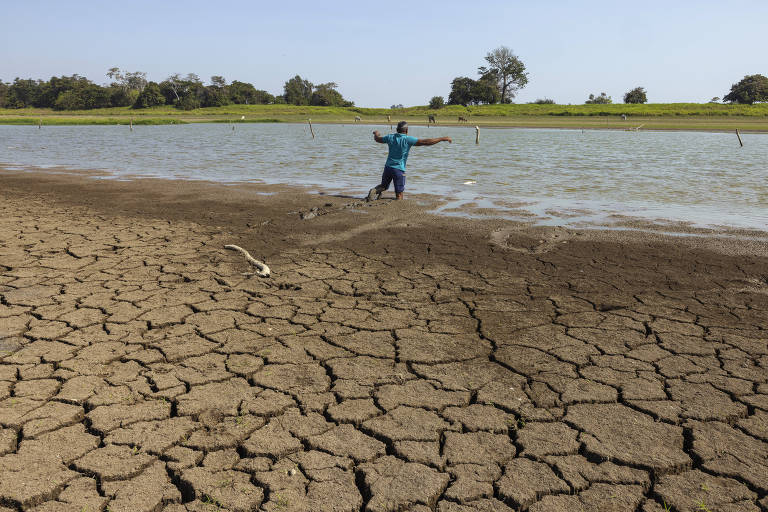Climate change has led to a devastating scenario for Brazil’s rivers in 2024. For the first time in over a century of volume measurements, five major river basins in the country were declared in a "state of water scarcity."
This includes the Madeira, Purus, Tapajós, and Xingu basins—tributaries of the Amazon River—and the Paraguay River, which flows through the Pantanal.

Nearly dry lake in the Saracura Quilombola Community, located in the floodplain of the Amazon River near Santarém. ( Foto: Lalo de Almeida/ Folhapress ).
According to official data from the ANA (National Water and Basic Sanitation Agency) obtained by Folha, the combined areas of the five affected basins cover a total impacted territory of 2.264 million km².
This means that in 2024—a year when Rio Grande do Sul experienced the worst floods in its history—26% of Brazil’s territory also suffered from the effects of extreme drought.
The federal government has taken a contradictory stance on the issue. While it acknowledges the critical situation, it has simultaneously implemented budget cuts that hinder monitoring and enforcement capabilities.
André Lima, secretary at the Ministry of Environment and Climate Change, believes that climate change is here to stay, with droughts and floods becoming increasingly frequent and severe.
[Read the article in the original language](https://www1.folha.uol.com.br/ambiente/2024/12/seca-recorde-impoe-estado-de-escassez-hidrica-inedito-no-brasil-com-5-bacias-em-pior-nivel.shtml)